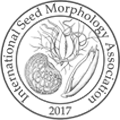Seed ID Forum › Seed ID Forum › Seed Morphology and Identification › Seed identification question from Wisconsin, USA
Tagged: seed identification
This topic contains 3 replies, has 2 voices, and was last updated by ID0000144e0e5e1ad7f4dac9a96d0a2b2fc7b8ec1c6d89666 3 years, 9 months ago.
-
AuthorPosts
-
July 3, 2020 at 6:27 pm #434
Hello!
Calling seed identification enthusiasts – we received an email today regarding some hard, white seeds found in south-central Wisconsin state. I’ll copy the email below and attach the image that was sent to us, please let me know what you think this mystery seed is. I’ll work on it as well – they look quite interesting!
>>>>>>>>
Hello idSeed.We live in SouthCentral Wisconsin.
We found 100’s fo these near our ball diamond.
There is grass, weeds, a pond nearby. There are also some trees, but not close to where we found them.
Do you know what kind of seeds these are?
They are hard, white and weren’t able to be squished between our fingers. We could step on them on the cement and they would break.The inside seems hollow and dark colored.
Thank you for your help.
Attachments:
You must be logged in to view attached files.July 7, 2020 at 5:19 am #439Hi Jennifer,
I think these could be Celtis sp. endocarps (Cannabaceae). Maybe check what species of this genera occur in the area?
Kind regards,
Katherine Nelson
(Australia)July 8, 2020 at 5:21 pm #440Hi Katherine,
Yes! I agree that these are endocarps (pits or stones) from Celtis sp. (hackberry, sugarberry) fruits in the Cannabaceae.
These trees produce fleshy fruits with a hard, pale coloured pit covered in a ridged reticulate pattern that can be seen in the image. The fruits, called drupes, are dark-coloured and unremarkable, making it hard to connect the highly patterned pit coming from a smooth-skinned fruit. The layers of a Celtis sp. drupe are in this image from Wikipedia: https://commons.m.wikimedia.org/wiki/File:Celtis_australis_fruit_and_seed.jpg.
Many pits of Celtis spp. look similar, making an identification to species difficult without ecological information. Based on the area it was found, I would suggest that the most likely species is Celtis occidentalis, common or northern hackberry. Since the fruits are enjoyed by wildlife, they may have scattered the pits away from the tree?
Are there Celtis spp. in Australia Katherine?
Thanks, Jennifer
July 13, 2020 at 12:16 am #441Hi Jennifer,
Great to hear from you. I recognised these because we have Celtis australis commonly naturalised in our region, and seed production is prolific. Australia has 13 confirmed species of Celtis, including C. occidentalis.
You are probably right thinking that wildlife deposited them, especially given the proximity to a water body. Great image of the layers of the drupe. I haven’t seen that before.
I look forward to seeing other interesting seeds that cross your path!
Kind regards,
Katherine -
AuthorPosts
You must be logged in to reply to this topic.



